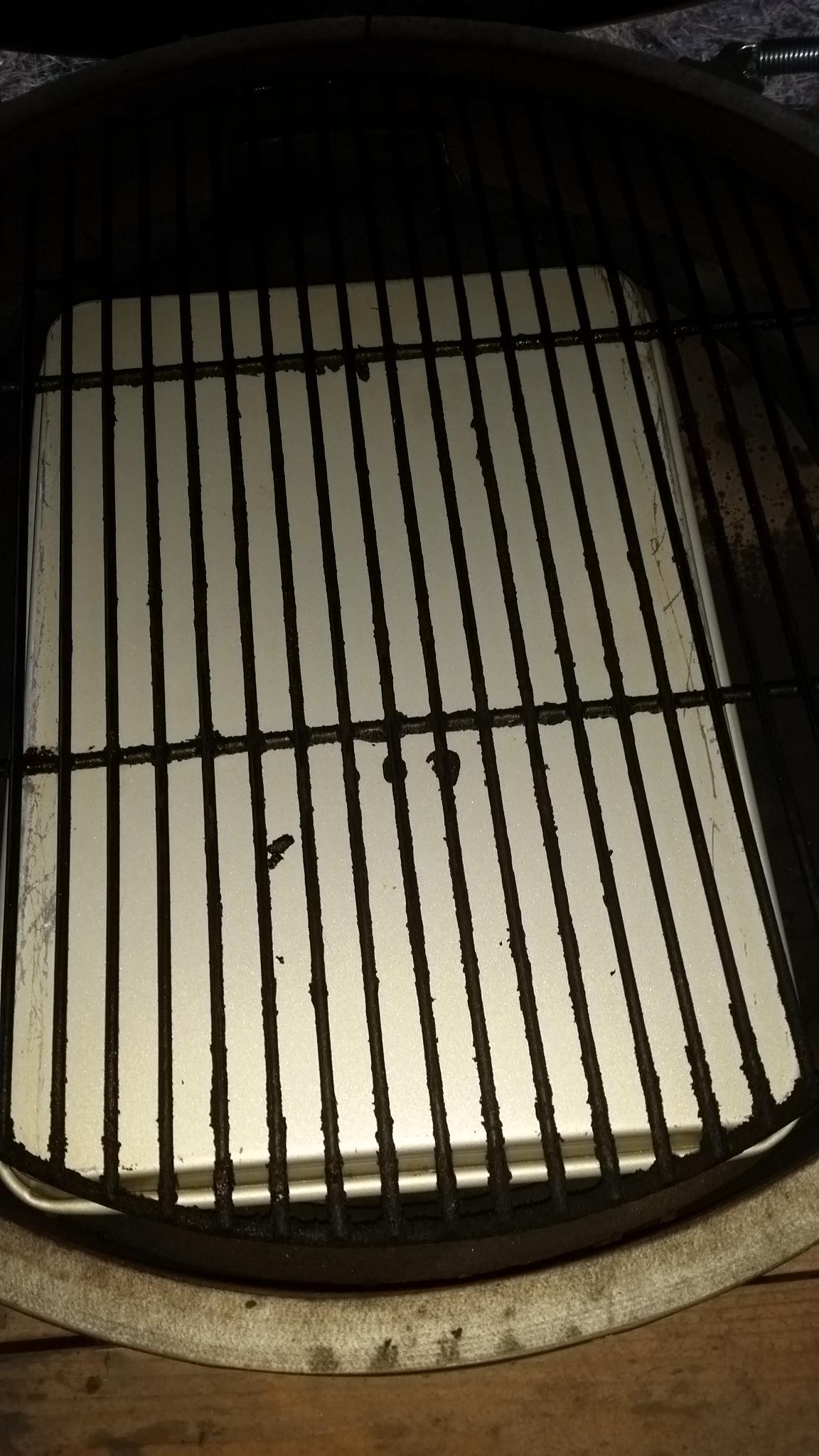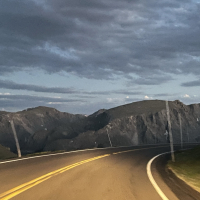Welcome to the EGGhead Forum - a great place to visit and packed with tips and EGGspert advice! You can also join the conversation and get more information and amazing kamado recipes by following Big Green Egg to Experience our World of Flavor™ at:
Want to see how the EGG is made? Click to Watch
Facebook | Twitter | Instagram | Pinterest | Youtube | Vimeo
Share your photos by tagging us and using the hashtag #BigGreenEgg.
Share your photos by tagging us and using the hashtag #BigGreenEgg.
Want to see how the EGG is made? Click to Watch
Help a brother out....

dougcrann
Posts: 1,129
First brisket turned out miserable. Long story....does a brisket NEED to be foiled with liquid added on an Egg?
Comments
-
Nope, shouldn't need to add liquid or foil. Some folks wrap in butcher paper. Sounds like we need a little of your long story... A little dry I assume?
 +++++++++++++++++++++++++++Austin, Texas. I'm the guy holding a beer.
+++++++++++++++++++++++++++Austin, Texas. I'm the guy holding a beer. -
Nope elaborate on what horrible is and we can help. Dry? Tough? Smokey? Whole packer or just a flat? Pull at a certain IT?Columbia, SC --- LBGE 2011 -- MINI BGE 2013
-
Usually a dry brisket is an undercooked brisket. Though I have made select briskets that seemed to be fully rendered and still a little dry. I like to wrap but it's definitely not necessary. IF anything the egg is the cooker a brisket needs to be wrapped the LEAST in.XL, Small, Mini & Mini Max Green Egg, Shirley Fab Trailer, 6 gal and 2.5 gal Cajun Fryers, BlueStar 60" Range, 48" Lonestar Grillz Santa Maria, Alto Shaam 1200s, Gozney Dome, Gateway 55g Drum
-
Sorry for not elaborating. Need to get moving, Ernestina has a post-op doc visit. Will give more details when we get home.
-
-
Got a few minutes. Was a packer. Trimmed all the rock hard fat off. Skimmed a bit of the fat cap. Olive oil and a rub we like. Set the XL up with the Guru to run at 225*. Flipped a quarter, fat cap up won. Was expecting it to be 1.5 hours@pound so I put it on at 9:40 p.m. Woke up and stuck the temperature probe in at 6 a.m. Was 188* if I remember right. Stuck a probe in, from the top side, near the point/flat junction. Hit some resistance. Probed every 25 or so minutes after this. Kept feeling resistance. IT hit 204* and after probing it again it slid right in. Pulled it off, wrapped it in some butcher paper and into the towel stuffed cooler. This was around 8:30 a.m. Left it in the cooler until 2 or so. Sliced it about 1/2" thick. Very little juice was on the cutting board during slicing. Tried draping a slice or two over my finger, while it did bend somewhat the slice would fracture and fall. Meat, in my noob experience, was very dry.
I tend to get frustrated very easily. In talking with a fellow on another site he said I went wrong right out of the gate by going low & slow, he always cooks briskets at 325*. Have heard that from a few different folks I have had offer assistance. This easily frustrated thing is making me want to run the next one hot and fast.
My somewhat cryptic beginnings of this thread came about from a discussion I had with another, much more experienced smoker than I. This fellow uses a RF. He runs the temperature in the 275-300* area, that is the "sweet spot" for his cooker. He uses a water pan. Has admitted that he is uncertain it is needed. First three hits he read on an internet search concerning brisket and the BGE all used a pan of foil with liquid.
Anyhow, if you fine folks need any more info please do not hesitate to ask. Debating on stopping at Cash & Carry today so we can pick up another packer. Very well may try the hot & fast method....but leaning towards the low and slow...I really do need to not jump from one ship to another, but like I mentioned I am frustrated, and very disappointed by the outcome of my first try. I understand that it was only my first try.....but as my head doc keeps trying to convince me I set the expectation bar far to high for myself....lol...
-
Tell us more about your setup. I ask because it is really important that all rising (direct or semi-direct) heat not be able get to the bottom of the brisket - especially if you are cooking with the fat up. A large brisket sitting on a grate that only has a platesetter below it can overhang the platesetter a fair amount. In addition the platesetter gets quite hot itself and provides some radiant heat to the bottom of the meat. That's why it is very important to have a drip pan of some sort that blocks any heat that could potentially rise to the bottom of the meat - and the drip pan needs an air gap between it and the platesetter. My first few briskets were fairly dry until I figured this out.
XXL BGE, Karebecue, Klose BYC, Chargiller Akorn Kamado, Weber Smokey Mountain, Grand Turbo gasser, Weber Smoky Joe, and the wheelbarrow that my grandfather used to cook steaks from his cattle
San Antonio, TX
-
A question if I may. Above you stated that you sliced it 1/2 inch thick. Was this because it would crumble if you tried slicing it any thinner? 1/2 inch is about 1/8 thicker than what point slices should hold up to and about 1/4 thicker than what flat slices should hold up to. For clarity, point slices should support themselves but still snap clean when cut 3/8 thick. Flat slices should support themselves but still snap clean when sliced 1/4 thick. Your slicing it a 1/2 thick has me pondering.
Location- Just "this side" of Biloxi, Ms.
Status- Standing by.
The greatest barrier against all wisdom, the stronghold against knowledge itself, is the single thought, in ones mind, that they already have it all figured out. -
I know some people are really opposed to the Texas crutch, but I've found it to be an invaluable use for my purposes considering: 1) it helps to tenderize the meat and keeps it moist and 2) the appearance of a maroon-shiny brisket coming out of the foil after sitting in it for a couple of hours is mouthwateringly appealing. I discovered this second benefit at a tailgate party three years ago when people started photographing the briskets as I was unwrapping them. they looked sensational.
-
I read some place that the Egg is a bit warmer in the back doe to the way the air enters. Since reading this I always put a "leg" of the platesetter directly in the rear of the Egg. When I put the brisket on I put it with the point towards the rear, so it was shielded by the plate setter. The tip of the flat was not. Hell, the brisket needed to have a slight wave put into it so it would fit on the grate. The end of the flat did get a bit crisp. My platesetter has very short legs. Be lucky to fit a pan under it, never mind a pan with an air gap. I will verify this here shortly. Hope I answered your desire for my info, if not please ask away.Foghorn said:Tell us more about your setup. I ask because it is really important that all rising (direct or semi-direct) heat not be able get to the bottom of the brisket - especially if you are cooking with the fat up. A large brisket sitting on a grate that only has a platesetter below it can overhang the platesetter a fair amount. In addition the platesetter gets quite hot itself and provides some radiant heat to the bottom of the meat. That's why it is very important to have a drip pan of some sort that blocks any heat that could potentially rise to the bottom of the meat - and the drip pan needs an air gap between it and the platesetter. My first few briskets were fairly dry until I figured this out.
With how dried out it was I just sliced it. Some of the slices just crumbled. I took about a third of the point off and cubed it. Ernie just shredded the balance of it.SGH said:A question if I may. Above you stated that you sliced it 1/2 inch thick. Was this because it would crumble if you tried slicing it any thinner? 1/2 inch is about 1/8 thicker than what point slices should hold up to and about 1/4 thicker than what flat slices should hold up to. For clarity, point slices should support themselves but still snap clean when cut 3/8 thick. Flat slices should support themselves but still snap clean when sliced 1/4 thick. Your slicing it a 1/2 thick has me pondering.
We did pick up another brisket today. Was planning on cooking it tomorrow but it looks like Wednesday is more realistic. The pan makes sense to me. However I seriously doubt that I will have enough space for a pan with an air space under it. Unless of course I just take the pan that I think may fit and just turn it upside down. But if I were to put it fatcap down and leave the fat cap somewhat intact on the flat perhaps it will help...
-
Elevate the pan, let the grid sit on the pan. As long as it holds, no problemo
-
Will this work? Have a second pan the same size, perhaps to catch the drippings? Would put the point towards the rear of the smoker, fat cap down.


-
I use one of those big aluminum pans and my grate sits on that. The pan held the rack and 15 lb. brisket plus later on 3 racks of ribs with no problem.
 Midland, TX XLBGE
Midland, TX XLBGE -
I would use that pan only turn it the other way (so it can catch the drippings) Make some little balls of aluminum foil and put them on the platesetter. Then put that pan on the balls of foil such that it can catch the drippings. Then put the cooking grate on top of that. Put the brisket over that pan. And consider wrapping in butcher paper when the brisket hits 160 and/or you are happy with the bark.dougcrann said:Will this work? Have a second pan the same size, perhaps to catch the drippings? Would put the point towards the rear of the smoker, fat cap down.

XXL BGE, Karebecue, Klose BYC, Chargiller Akorn Kamado, Weber Smokey Mountain, Grand Turbo gasser, Weber Smoky Joe, and the wheelbarrow that my grandfather used to cook steaks from his cattle
San Antonio, TX
-
Was having a severe case of brain fog yesterday. "Air gap between the plate setter and pan" threw me for a loop. Aluminum foil balls.....Thank You.Foghorn said:
I would use that pan only turn it the other way (so it can catch the drippings) Make some little balls of aluminum foil and put them on the platesetter. Then put that pan on the balls of foil such that it can catch the drippings. Then put the cooking grate on top of that. Put the brisket over that pan. And consider wrapping in butcher paper when the brisket hits 160 and/or you are happy with the bark.dougcrann said:Will this work? Have a second pan the same size, perhaps to catch the drippings? Would put the point towards the rear of the smoker, fat cap down.

Categories
- All Categories
- 184K EggHead Forum
- 16.1K Forum List
- 461 EGGtoberfest
- 1.9K Forum Feedback
- 10.5K Off Topic
- 2.4K EGG Table Forum
- 1 Rules & Disclaimer
- 9.2K Cookbook
- 15 Valentines Day
- 118 Holiday Recipes
- 348 Appetizers
- 521 Baking
- 2.5K Beef
- 90 Desserts
- 167 Lamb
- 2.4K Pork
- 1.5K Poultry
- 33 Salads and Dressings
- 322 Sauces, Rubs, Marinades
- 548 Seafood
- 175 Sides
- 122 Soups, Stews, Chilis
- 40 Vegetarian
- 103 Vegetables
- 315 Health
- 293 Weight Loss Forum







